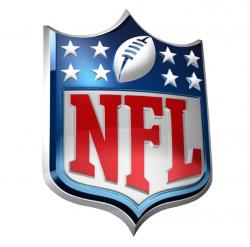Free agency is upon us, it hit like a block falling from the Empire State Building, splattering all over the place.
How has this evolved
In 1989, the league introduced a form of free agency called “Plan B”. This was written into the NFL bylaws as follows: (Plan B) allows each team to retain limited rights to 37 players each season. A protected player is unable to sign with other teams without giving his old team the first chance to sign him or forcing his new club to compensate his old club if he goes elsewhere.
This plan today would be the equivalent of offer sheets, with a team retaining the right to match. In reality, nobody was free. The word unrestricted free agent was not in the vocabulary just yet.
The players realized this and began their fight. In order to get labeled free agents, the players went after the antitrust laws, and the NFL was violating it. Famous Judge Doty agreed, he ruled that the NFL, was indeed violating antitrust laws. So in the spring of 1993 real free agency began.
Some fans still hate that a player his team drafted, may never finish his career on that team. That was the case before free agency. It was nearly impossible for any player to walk away, unless he was traded or cut. That practice gave us some powerhouse teams that were hard to beat every year. To be fair, those teams were not buying their power, but drafting well every year.
The chaos of today
Free agency has now become huge, and numerous players switch teams after their contract runs out. Fact is, after 1993, the owners began to use power and money to build. That gave us the CAP. Which in all fairness, was not a way to keep a balance, but a way to stop the owners from bankrupting the league. Today, the NFL has flourished more than any other American sport, and in my opinion, the CAP is part of the reason.
Unlike in the early days, when nobody really understood it, the CAP itself has evolved, and teams, agents, all have learned how to get around it. With one huge problem: at first it was football minds making these decisions, not accountants. General Managers and Head Coaches wanted the best available players, the money part was never for them to worry about, it is now. Most teams have multiple accountants that are sports experts in dealing with restrictions to overall budgets. Tannenbaum was hired as a young man by Bill Parcels, for this exact purpose.
Why some have some don’t
Some teams tend to have a lot of CAP room, some struggle to get under the CAP, what gives?
- If you have done a good job re-signing all your drafted talent, and budget well position by position, generally you are left with enough money to draft and sign those players. These are by far the most successful teams., see the Patriots.
- If you are left with so much money to spend that you sign anyone that you wish to sign, for ridiculous money, you probably need to rethink your methods. Teams that have this much money, generally have made many mistakes in the 2-3 years prior to that. Probably restructured too many players that are now getting paid, and are not worth it. This practice generally allows your own talent to walk away. The end result is cuts, numerous cuts, and money to spend. These teams tend to be in the middle of the pack or lower, every year, see the Tannenbaum/Idzik led Jets.
- This next one is by far the most devastating one, and it leads to number 2, above. Some teams will restructure big contracts to create space, which in turn allows more money to be thrown away. This is done in many ways, but lets face it, unless the player you are restructuring is taking a pay cut, it usually means you are adding years and or guaranteed money in the form of a bonus. This practice is good for immediate success, but it is not sustainable, and it leads to disaster. See the Dolphins of a year ago.
- Lastly, there are teams that tend to be too conservative, and they wait and wait before res-signing their talent. It is very hard to make the decision of just extending a player, because if it fails, it leads to the other two previous messes I described above. This is when a GM must know how to gamble, and do so with a good enough bet that if it fails, it will not hurt you. Not easy to do, see the Bills and Tyrod Taylor.
Strictly my opinion
Ultimately, the truth is that to go back to 1988 it will not do the sport any good. To use the 1989 plan is really the same as no free agency at all, thus violating labor laws. Some even argue that we do not need the CAP, I cannot agree at all. The CAP is what has kept this period of insanity (first 2 days of new year) somewhat sane. Without a CAP, the money given out to the winners of yesterday’s lottery might have doubled, even tripled. The aftermath effect would be that even the water boy would be making millions, eventually killing the game.
Teams that succeed still draft well, that was the formula for success when the Jets drafted Joe Namath and eventually convinced the bigger and stronger boys that we could all live as one. That is still the formula to the promised land. Good drafts equal less expensive players for years, and if that process is maintained, the team will never need to make big splashes the way the Giants did yesterday.
Happy Free Agency!




















Facebook
Twitter
RSS